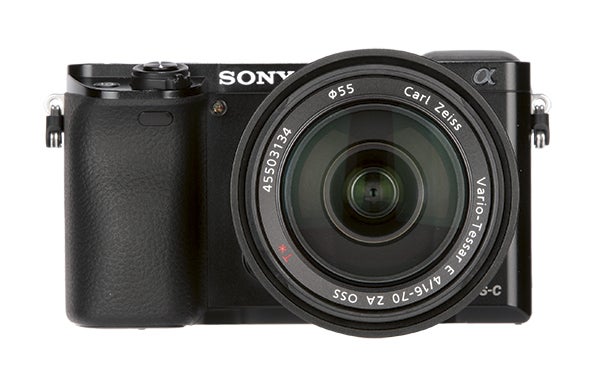The new Sony A6300 updates the popular A6000, and while the two appear very similar on the outside it’s clear that the new model is a very different beast under the skin. So what exactly has the company changed? Here are the key differences.
Sony A6300 vs A6000: Sensor
At first glance the two cameras may appear to offer the same sensor, although Sony claims the one inside the A6300 is newly developed. Once again it’s an APS-C sized Exmor CMOS chip, and offers approximately 24.2MP, in contrast to the A6000’s 24.3MP. One significant difference between the two is that the new sensor has been constructed with copper wiring, which Sony claims not only boosts light capture efficiency but also quickens readout speed.
Sony A6300 vs A6000: Sensitivity
One further changes that can be attributed to the new sensor is the expansion to the camera’s sensitivity range. Whereas the Sony A6000 topped out at ISO 25,600, the A6300 reaches ISO 51,200.
Sony A6300 vs A6000: Processor
A BIONZ X processor has once again been used for the A6300, although here it’s said to feature “an upgraded image processing algorithm designed to maximise the sensor’s overall capabilities”.
Sony A6300 vs A6000: AF system
The A6000’s 4D FOCUS AF system was one of its highlights and this has been tweaked for the A6300. In fact, Sony goes so far to claim that system inside the new model offers the fastest autofocus speeds of any interchangeable-lens camera equipped with an APS-C sensor.
The camera offers a Fast Hybrid AF system, which combines phase- and contrast-detection AF and promises to identify and lock on to subjects in as little as 0.05 seconds. The system offers a High Density Tracking option with 425 phase-detect AF points – the A6000 had 179 phase-detect AF points and 25 contrast-detect AF points – and this is said to span almost the entire field of view. This technology is also said to place a large number of points around a subject when set to tracking for better accuracy (7.5 times denser than the A6000), adjusting these in accordance with the subject’s motion.
When recording videos, Sony claims the A6300 will focus almost twice as fast as the A6000, with the option to adjust AF speed and tracking sensitivity also on board. The A6000 was no slouch in this area, so if this is true it’s certainly impressive. You can also now use autofocus in the focus magnifier mode and Eye AF when the camera is set to the AF-C (continuous) setting in addition to a handful of smaller changes.
Sony A6300 vs A6000: Burst shooting
Like the A6000, the A6300 offers an 11fps burst-shooting mode with autofocus working throughout, although it also offers an 8fps option that maintains the live view feed. When using the viewfinder Sony says this marries the benefits of an electronic viewfinder with the immediacy of an optical one, although this is displayed in the same way if using the LCD screen.
Sony A6300 vs A6000: Video recording
The A6000 offered Full HD video recording although the A6300 becomes the latest model to sport 4K capabilities. While this has been included on a number of recent Sony releases, this is the first time this has appeared on non full-frame interchangeable lens camera from the company.
Sony claims that the camera uses full pixel readout without pixel binning, which results in 20MP of information; this equates to a 6K resolution, which is almost two-and-a-half times the amount normally captured for 4K UHD. This process, Sony claims, yields superior results to the norm for 4K recording.
4K UHD videos are captured in the Super 35mm format and can be recorded at up to 100Mbps when using the XAVC S codec. When shooting in Full HD this is reduced to 50Mbps as standard, although there is also the option to record 120fps footage in Full HD quality at 100Mbps, which can be edited into 4x or 5x slow-motion videos. For this, however, you need to use a UHS Class 3 memory card.
Other video options include the S-Gamut and S-Log gamma recording options, the latter’s S-Log3 setting offering a 14EV-stop dynamic range – ideal for videographers adjusting their footage post capture. There’s also now a mic input which was absent from the A6000 (although an external microphone could be used with the A6000 via the hot shoe).
Sony A6300 vs A6000: Viewfinder
The A6300’s XGA OLED Tru-Finder boasts 2.4million dots and can be set to a display rate of 120fps, which Sony claims eases subject tracking and ensures that there are “very few afterimages”.
Sony A6300 vs A6000: Silent mode
Another new feature for the A6300 is a silent shooting mode.






